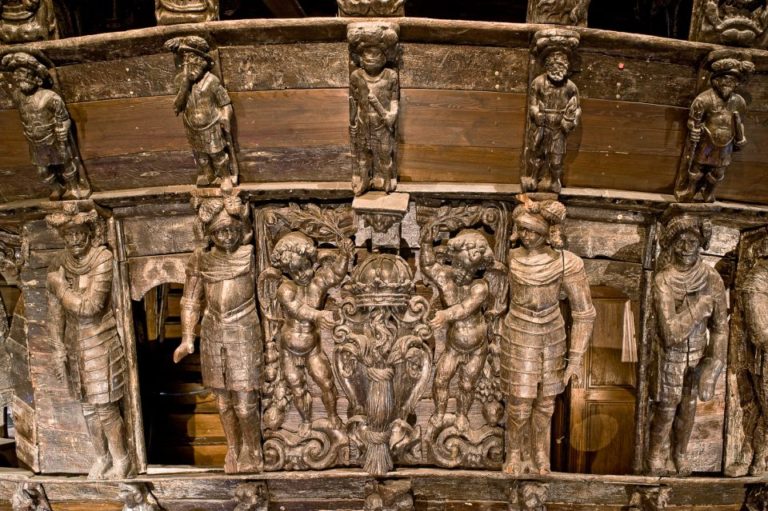About Vasa Museum
The Vasa Museum is a popular tourist attraction in Stockholm, Sweden, that houses the Vasa ship, one of the most well-known and preserved maritime artifacts in the world. The Vasa ship is a 17th-century warship that sank on its maiden voyage in Stockholm in 1628 and was salvaged in the 20th century. The museum is dedicated to the history and preservation of this remarkable ship, as well as the history of Sweden’s naval power during the 17th century.
The construction of the Vasa ship began in 1625 under the direction of the Swedish King Gustav II Adolf, who sought to increase the naval power of Sweden, which at the time was a relatively new and small European power. The ship was designed by a Dutch shipbuilder, Henrik Hybertsson, and was one of the largest and most heavily armed ships of its time.
The Vasa ship was built with three decks and a total of 64 cannons. It was decorated with ornate carvings and painted with bright colors, showcasing the wealth and power of Sweden’s ruling class. The ship was also equipped with a large number of sculptures and other decorative elements, making it one of the most impressive ships of the era.
However, the construction of the Vasa ship was plagued with problems from the beginning. The ship was built too tall and too narrow, making it unstable in the water. Additionally, the cannons were too heavy for the ship, causing it to list to one side. Despite these issues, King Gustav II Adolf insisted on completing the ship, hoping that it would help Sweden expand its naval power.
The Vasa ship was launched on August 10, 1628, in front of a large crowd of spectators. However, just minutes after it set sail, the ship began to tilt to one side, taking on water and sinking in the harbor. The exact cause of the sinking is still debated, but it is believed that a combination of design flaws and human error contributed to the disaster.
The sinking of the Vasa ship was a great tragedy for Sweden, and it was considered a national embarrassment at the time. However, the ship was not completely forgotten. Over the years, several attempts were made to salvage the ship, but it was eventually abandoned and forgotten for nearly 300 years.
In the early 20th century, a Swedish archaeologist named Anders Franzén became interested in the Vasa ship and began searching for it in the waters around Stockholm. After years of searching, Franzén finally located the ship in 1956, using a homemade sonar device. The ship was remarkably well-preserved, thanks to the cold, brackish waters of the Baltic Sea.
Salvaging the Vasa ship was a difficult and expensive process, but it was eventually raised from the depths of the harbor in 1961. The ship was then transported to a dry dock and carefully restored over the course of several decades. Today, the Vasa Museum is dedicated to the preservation and display of the Vasa ship, as well as the history of Sweden’s naval power during the 17th century.
The Vasa Museum is a popular destination for tourists and history buffs from around the world. The museum features several exhibits that tell the story of the Vasa ship and its construction, sinking, and eventual recovery. Visitors can see the ship up close, as well as explore its three decks and see the ornate carvings and sculptures that adorn the ship.
In addition to the Vasa ship, the museum also features exhibits on the history of Sweden’s naval power during the 17th century. Visitors can learn about the weapons and tactics used by the Swedish navy during this time, as well as see other artifacts from the era, such as cannons and muskets.



